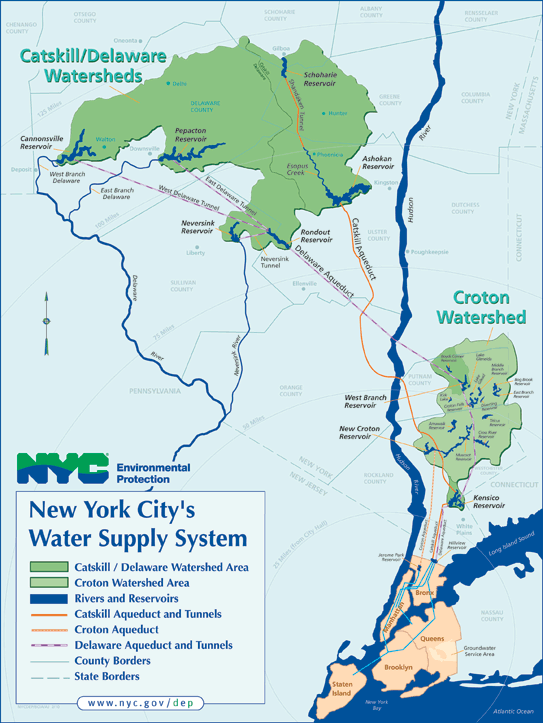In honor of the third Hoboken water main break of the year, I’m going to write about an odd and underappreciated benefit of New York: the water. While the tap water is fine in most of the country, NYC water is clearly something special since pizzerias and bagel shops in Florida and San Diego are having water shipped cross-country and down most of the east coast. This begs the question: what makes the water so special in the first place?
First, the ideal chewy texture in the pizza crust, bagels, donuts, and just about any other baked good in New York comes from the water’s calcium content. Most of the country’s tap water doesn’t have enough calcium, so the result is bad pizza. Of course, if a bakery or pizzeria in say, Montana has enough extra money, they can treat the water or dough with calcium sulfate, but most of them don’t.
Secondly, the pH in New York water is close to pure water. As most of my readers know from General Chemistry I & II, having a lot of extra H+ or OH- ions can really interfere with a reaction. Again, a bakery with enough extra money can treat their water, it’s just that most don’t.
Regardless of how bakers in the rest of the country could treat their water, the fact is that ours don’t have to. The reasons why involve a lot of infrastructure, land preservation, and luck. The luck lies about 130 miles north of the city, in the Catskill/Delaware Watershed. The watershed covers over a million acres, and has almost no limestone. This requires less treatment to produce purer water. Governments and non-profit organizations have preserved nearly half of the land around the watershed. The remaining 60% of the watershed’s land is heavily regulated to prevent any contamination. This water is brought to the city through a 92 mile long, gravity-powered, underwater aqueduct. The gravity-powered system allows the aqueduct to work 24/7, but is scheduled to receive a $3.4 billion dollar repair in 2022. The water is constantly monitored by field scientists, who predict future water quality.
Once the water actually reaches the south end of the aqueduct, it passes through the world’s largest ultraviolet disinfection facility, located just north of the city in Westchester. The water doesn’t go straight from the Westchester facility to the city, though. It’s treated to prevent pipe corrosion and to raise pH levels. It’s then sent to the Hillview Reservoir, which is the water’s last stop before the water main tunnels.
Since almost no one drives in this town, there isn’t really a need for gas. That’s why I call water the city’s secret fuel. So that’s how we get our fuel: with an extraordinary, 130+ mile long operation.

Be First to Comment